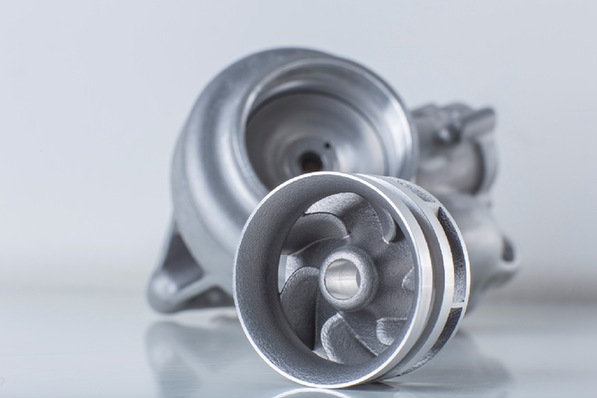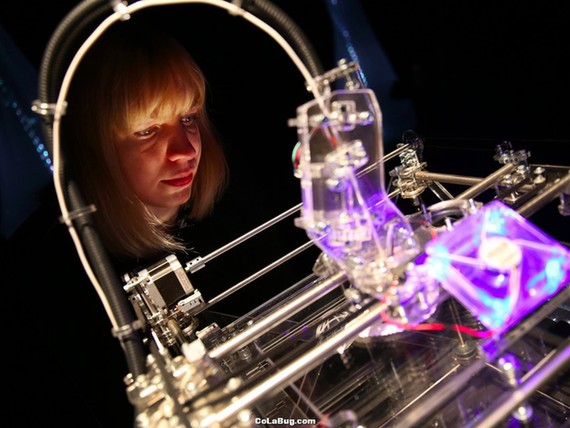Computer additive manufacturing technology, commonly known as 3D printing technology, is a processing technology that is based on 3D CAD model data and is manufactured layer by layer by adding materials. Compared with traditional material cutting, grinding, grinding and other processing technologies (called subtractive manufacturing), additive manufacturing is a "bottom-up" manufacturing method.

Additive manufacturing equipment is closely related to modern microcomputer technology. It is driven by the three-dimensional data of the parts. After the equipment receives the three-dimensional data, it is converted into processing steps to directly manufacture the parts. At the same time, with the development of computer software and hardware technology, the connotation of additive manufacturing technology is still deepening, and the types are also expanding. The current additive manufacturing technology is mainly realized in the following ways:
1. Light-curing printing, which uses ultraviolet light to scan the surface of liquid photosensitive resin, each time a certain thickness of thin layer is generated, and objects are generated layer by layer from the bottom. The advantages of light-curing printing are the high utilization rate of raw materials (close to 100%), high dimensional accuracy, and excellent surface quality. It can be used to make models with complex structures, and the printing equipment is small in size and weight. The disadvantage is that the types of raw materials are limited.
2. Selective laser sintering printing, that is, using a high-power laser to heat the powder to make it sintered. The advantage of the selective laser sintering process is a wide range of materials, except for sinterable plastics and nylon. Non-metallic materials such as polycarbonate can also be printed on metal materials, and there is no need for support during printing, and the printed parts have good mechanical properties and high strength. The disadvantage is that the powdered material is relatively loose, the printing accuracy is difficult to control, and the printing equipment is expensive.
3. Fused deposition printing uses a hot melt nozzle to squeeze out the plastic material from the nozzle after melting, and deposit it in a designated position to solidify and form. It is similar to the process of "squeezing toothpaste". This printing method is cheap, small in size, and relatively difficult to operate. It is suitable for home and office printing. The disadvantage is that the surface of the molded part has obvious stripes, the bonding strength between the product layers is low, and the reaction speed is slow.
4. 3D printing. This is a working method similar to the nozzle of an inkjet printer. This process is very similar to selective laser sintering, except that the laser sintering process is changed to nozzle adhesion, and the raster scanner is changed to an adhesive nozzle. The advantages of 3D printing are that the printing speed is fast and the cost is low, but the disadvantage is that the printed products have low mechanical strength.
After the practical application of additive manufacturing technology, it was quickly used in many fields. In the military field, additive manufacturing technology was first applied in the aerospace field, and then began to spread to the naval equipment manufacturing field. At present, the main application directions of additive manufacturing technology are:
The manufacture of small key parts, especially the manufacture of sensors, can be sintered layer by layer after melting the alloy with electron beam to obtain the basic structure of the sensor, taking into account the performance and manufacturing cost.

Additive manufacturing technology can also be used to manufacture complex molds and design models. Using three-dimensional inkjet printing technology, only the three-dimensional CAD file of the sample to be printed needs to be designed, which shortens the time from design to completion of the product from the original 25 weeks to 10 weeks.
Used for the repair of military equipment. This is a key development direction of current additive manufacturing technology. Additive manufacturing technology can be used for the rapid repair of mis-processed damaged parts in the manufacturing process, and the rapid repair of failed parts during equipment service. The repair of parts includes the restoration of geometric and mechanical properties. After the use of additive manufacturing technology is used to make up, and after a small amount of follow-up processing, the parts can be made to the useable level and the parts can be remanufactured with high efficiency and low cost. In the field of aviation, this technology can enable combat aircraft and equipment to be quickly repaired on the spot at the airport. In the field of ships, this technology can provide more protection for the equipment for ship cruises.
At present, the use of additive technology to repair equipment still needs to overcome a series of technical problems, such as the detection and closed-loop control of key factors in the laser/arc/plasma direct deposition repair process, the dimensional accuracy and shape accuracy control of the directly repaired metal parts, and the direct repair /Design of alloy system for selected area repair materials, etc.

